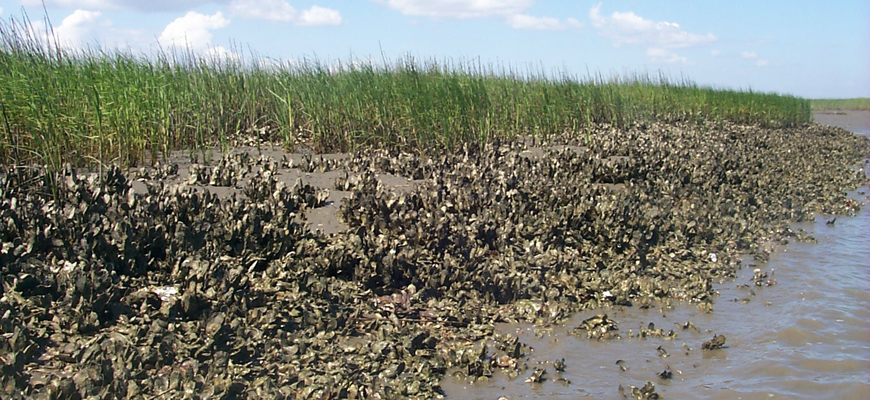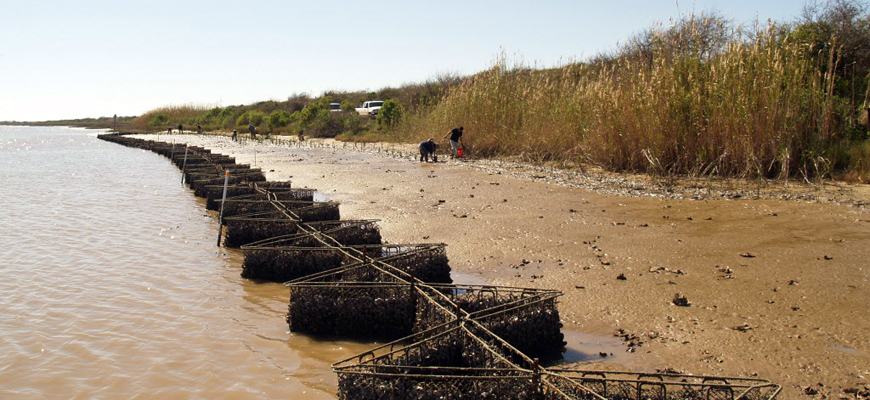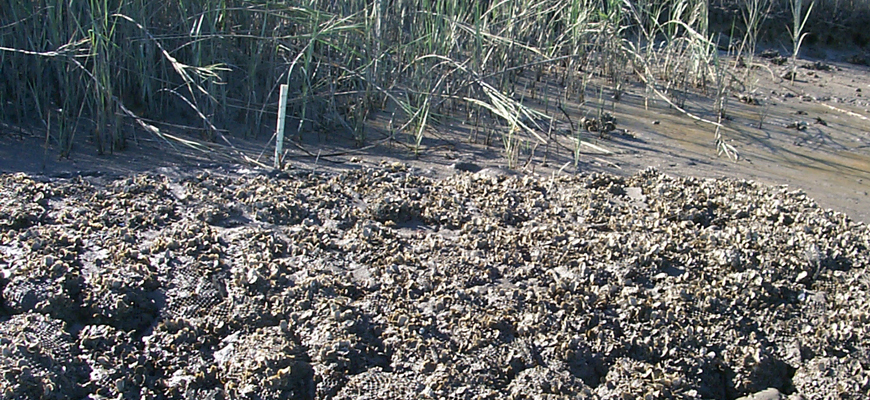Oyster reefs are hard structures on typically unconsolidated or mobile bottom sediments that can extend above the sediment surface in subtidal areas or fringe marshes in the low intertidal zone. In subtidal systems, reefs provide vertical relief in otherwise featureless benthic environments that can reduce fetch and the wind-driven resuspension of particulate matter. Oyster reefs near salt marshes absorb wave energy and promote colonization and persistence of the salt marsh habitat. The reduction in sediment input from shoreline erosion and subtidal resuspension can increase light penetration and promote growth of submerged aquatic vegetation (SAV) or benthic microalgae that further stabilize unconsolidated sediments. Restored reefs can be placed near SAV and⁄or intertidal marshes to enhance the value of the vegetated habitat and control erosion (e.g., mediating boat wake effects that can cause marsh banks to erode into tidal creeks).
Appropriate metrics: reef density; size frequency; reef size; reef architecture; fragmentation.










